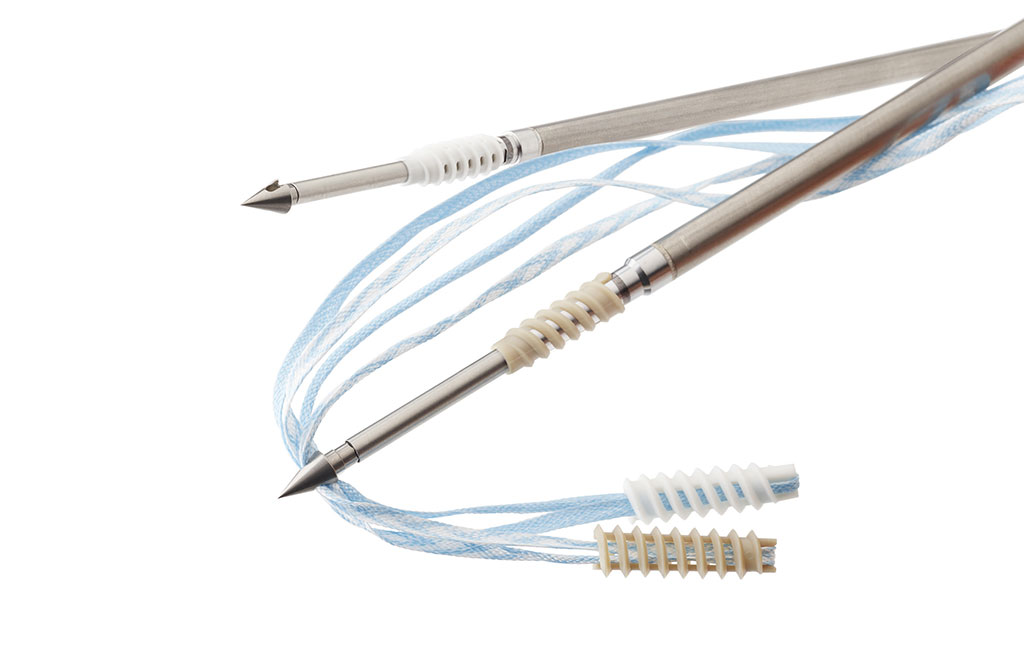Novel Suture Anchor Expands Rotator Cuff Repair Options
By HospiMedica International staff writers
Posted on 21 Sep 2020
A disruptive suture anchor technology enhances the body's biological response by promoting bone healing and formation.Posted on 21 Sep 2020
The Smith & Nephew (London, United Kingdom) HealiCoil Knotless absorbable suture anchor is based on a proprietary vented architecture design that facilitates better bony in-growth and bone density around the anchor six months after rotator cuff repair, as compared to non-vented, solid-core anchors. An additional interference fixation point and an interlocking polyetheretherketone (PEEK) plug ensure the suture is securely locked in place, by lowering the plug into the distal implant. The combination contributes to higher pull-out strength.

Image: The Healicoil Knotless suture anchor (Photo courtesy of Smith+Nephew)
The HealiCoil Knotless suture anchors also feature Regenesorb, a unique biocomposite that contains polylactic-co-glycolic acid (PLGA), and dual osteoconductive components, β-TCP and calcium sulfate. The combined physical and biochemical mechanisms of action encourage the implant to be absorbed and replaced by bone within 24 months. The pre-loaded bioabsorbable suture anchor is provided with up to three strands of non-absorbable sutures, and is available in two sizes, 4.75mm and 5.5mm.
“We are fully committed to providing our customers with world-class, comprehensive procedural solutions that help not just fix their patients, but truly heal them so they can get back to living life unlimited as quickly as possible,” said Scott Schaffner, general manager and senior vice president of sports medicine at Smith+Nephew. “The launch of HealiCoil Knotless as part of our advanced healing solutions portfolio is further reinforcement of our commitment to redefine the body's healing potential."
“The real advantage of the HealiCoil Knotless open architecture is that the marrow elements from the bone can reach the bone-tendon interface to promote healing where it is most needed,” said Ian Lo, MD, of the University of Calgary (Canada). “We have seen that the anchor leads to more robust healing of the tendon to the bone.”
The rotator cuff is a group of muscles and their tendons that act to stabilize the glenohumeral joint and allow for the extensive range of motion in the shoulder, including abduction and internal and external rotation. Of the seven scapulohumeral muscles, four make up the rotator cuff –the supraspinatus muscle, the infraspinatus muscle, the teres minor muscle, and the subscapularis muscle. A rotator cuff tear is an injury of one or more of the tendons or muscles involved.
Related Links:
Smith & Nephew














